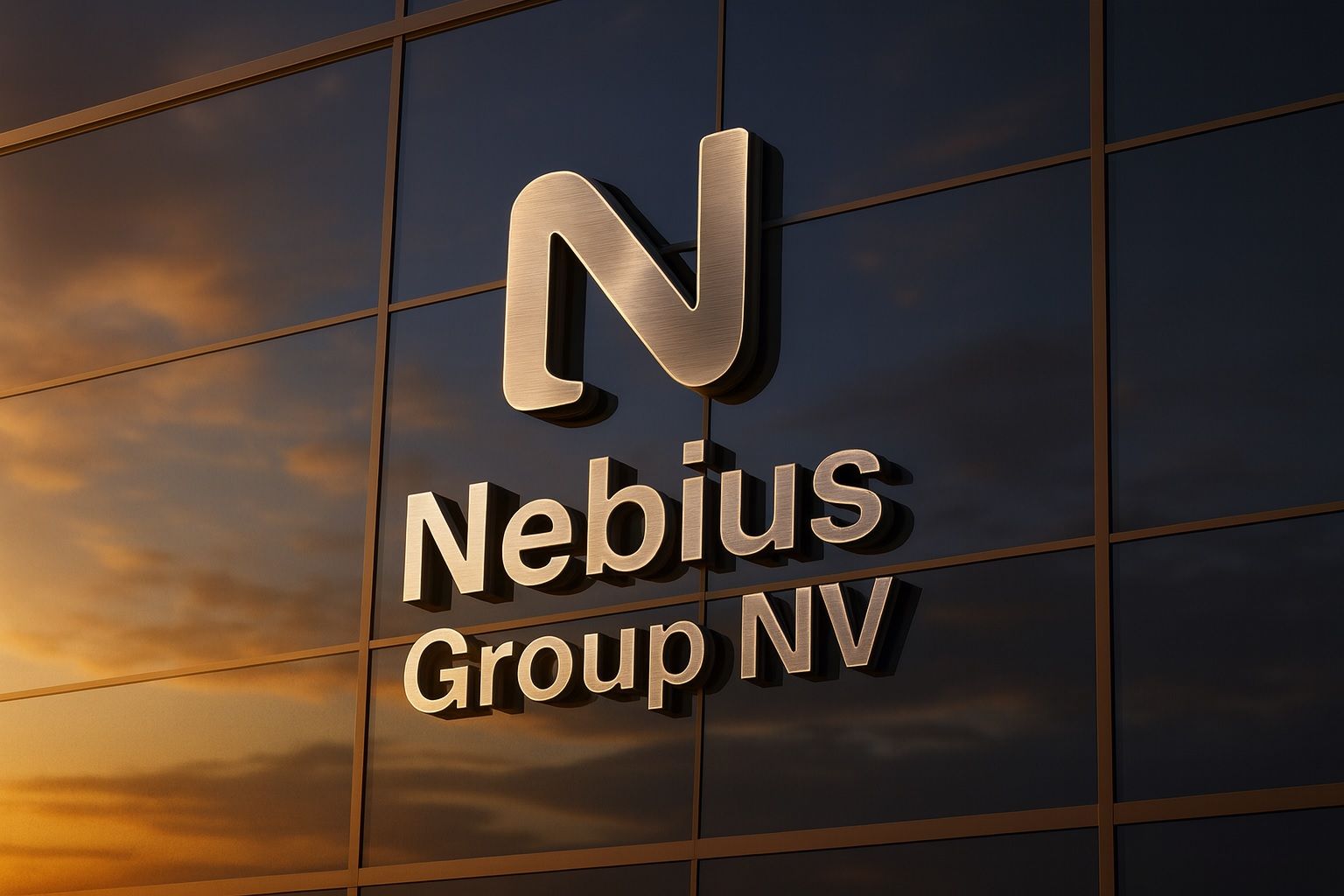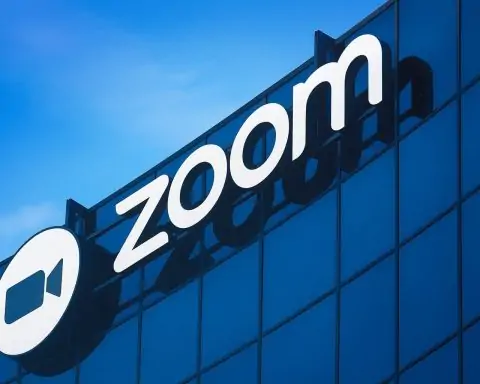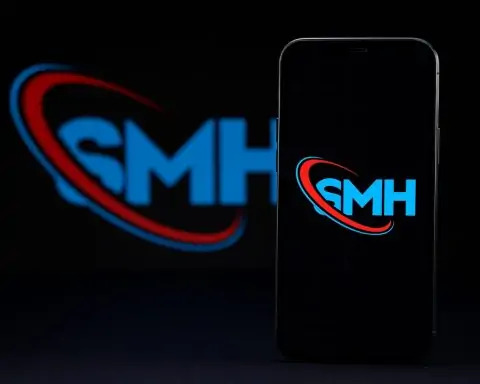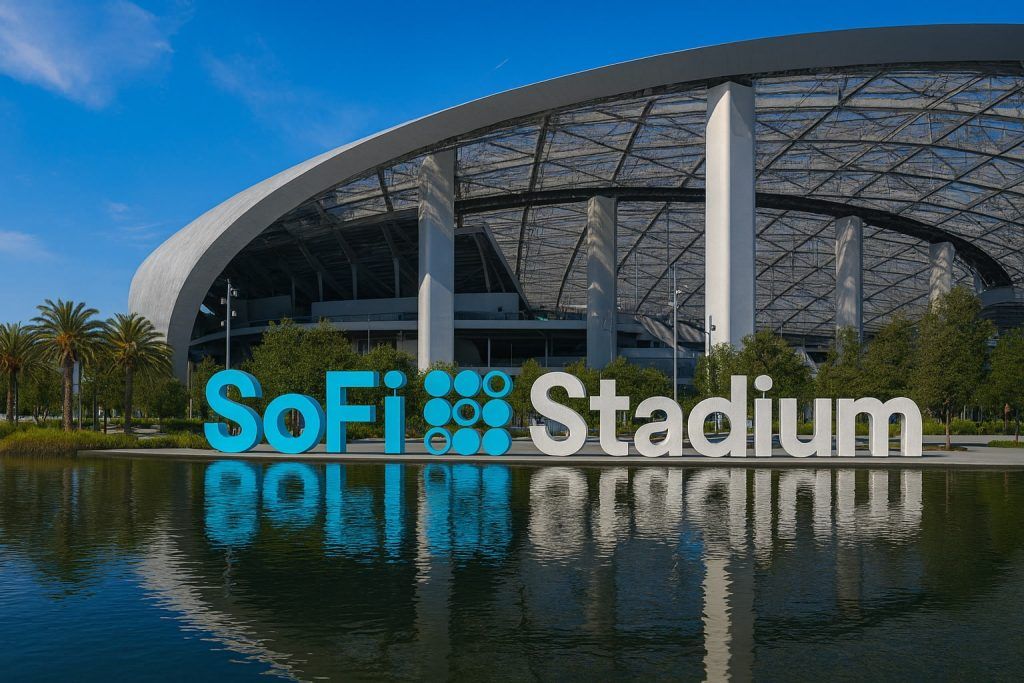- Riding the AI wave: Nebius (NASDAQ: NBIS) has surged roughly 350% in 2025 [1]. Shares climbed from about $14 last autumn to a 52-week high near $141 (intraday) by early October [2] [3]. The catalyst was a 5-year, $17.4 billion AI infrastructure deal with Microsoft (possibly expanding to $19.4 billion) announced in early September [4] [5]. That one news item sent NBIS up about +44% in a single session [6].
- Blistering growth: Nebius’s business has exploded with the AI boom. In Q2 2025 revenue jumped 625% year-over-year to $105.1 million [7], beating estimates and prompting management to raise its annualized revenue guidance to ~$900 million–$1.1 billion by year-end [8]. Analysts project ~231% compound revenue growth through 2027 (to ~$4.25 billion) and expect Nebius to reach positive EBITDA in 2026 [9]. The company is rapidly expanding GPU data centers (including a new 300 MW site in New Jersey) and has launched a $3 billion fundraising plan (via $2B in notes and $1B in equity) to power up to ~1 GW of capacity by 2026 [10] [11].
- Product launch: On Oct 16, Nebius rolled out “AI Cloud 3.0 – Aether,” an enterprise-grade platform for regulated industries [12]. It adds SOC-2/HIPAA security and granular governance controls to its AI cloud (for healthcare, finance, government, etc.) [13] [14]. Co-founder Roman Chernin touted Aether as giving enterprises “supercomputer performance, hyperscaler ease-of-use, and the trust and governance required for production AI” [15].
- Stock volatility: After peaking in early October (above $130), NBIS retraced about 5–7% mid-month on profit-taking [16]. By Oct. 17 it was trading around the low-$110s [17]. Shares rebounded later that week – on Oct. 22 NBIS closed ~$125 (up ~7% on the day) [18] – showing how swings can be extreme. Nebius now commands a market cap near $25–27 billion (about 6×2027 sales) despite still being unprofitable.
- Analyst views: Wall Street is mostly bullish. Goldman Sachs and BWS Financial both raised price targets after the Microsoft deal (to roughly $120–$137) [19], and Arete Research upped its rating to strong-buy. Of nine analysts tracked by MarketBeat, 5 rate NBIS “Buy” and 2 “Hold,” with consensus target ~$91 [20] – well below today’s price. Weiss Ratings recently graded NBIS a Hold (“C”), and Zacks now ranks it #3 (Hold) due to stretched valuation and execution risks [21]. In fact, Nebius trades at ~20× 2026 sales versus ~4.7× for peers [22], reflecting the crowd’s optimism (and caution among skeptics).
- Upcoming catalysts: Nebius will report Q3 2025 results on Nov. 11 (pre-market) [23]. Investors will watch if revenue growth stays torrid and losses narrow, or if costs from rapid expansion weigh on the bottom line. With such “frothy” stock sentiment, even slight disappointments could swing the price.
Nebius’s Meteoric Rise on AI Hype
Nebius Group N.V. is an Amsterdam-based newcomer (spun out of Yandex) that builds GPU-powered cloud infrastructure for AI applications [24]. Since listing on Nasdaq last October around $14, it has been one of 2025’s hottest stories. This surge reflects the AI compute boom and a series of eye-popping contracts. The most dramatic was the Sept. 8 announcement that Nebius will supply Microsoft’s Azure with GPU capacity (from its upcoming Vineland, NJ data center) over five years [25] [26]. That deal alone nearly doubled the stock overnight [27]. As BWS analyst Hamed Khorsand put it, the Microsoft pact “provides unprecedented clarity on [Nebius’s] long-term revenue potential” and “de-risks its planned capacity buildout” [28]. CEO Arkady Volozh echoed that optimism, saying the contract “will accelerate the growth of our AI cloud business even further in 2026 and beyond” [29].
Alongside the Microsoft contract, Nebius boasts marquee customers like Cloudflare, Shopify and Prosus, and has support from Nvidia (which owns ~0.5% of Nebius). It’s rapidly rolling out capacity – targeting 220 MW of power this year and over 1 GW by 2026 – to capitalize on what some call the “AI vacuum” of compute demand. In Q2 it beat expectations, and guidance was raised to roughly $900M–$1.1B run-rate by end-2025 [30] [31]. In short, Nebius is tracking toward a billion-dollar AI-cloud company. Market data firm FinViz notes that in 2025 Nebius’s stock “has more than doubled this year” off the Microsoft news [32].
Analysts Weigh In: Caution Meets Enthusiasm
On balance, analysts see upside but flag risks. Firms including Goldman and BWS now view NBIS as a Buy, citing rapid growth and Azure validation [33]. Nebius’s Q2 performance was so strong that analysts now assume ~231% yearly revenue growth to 2027 [34]. For example, Nasdaq.com reports Wall Street expects Nebius to exceed $4.25 billion sales by 2027, with EBITDA turning positive in 2026 [35]. Several banks raised price targets well into the triple-digits: Goldman at $120 and BWS at $130 after the Microsoft news [36].
But many also note the valuation is sky-high. As one Zacks analysis warned, Nebius’s “fundamentals appear to be improving rapidly,” but its “sharp rise has pushed its valuation to stretched levels,” with heavy capital spending and thin profit margins [37]. The average analyst target (~$91/share) is far below where the stock trades now [38], implying Wall Street may have priced in much of the good news. MarketBeat echoes that mixed picture: the consensus rating is “Buy,” yet the mean price objective lags by ~30% [39]. Industry veterans recall that Nebius only recently sold off its Russian connections – as Jim Cramer quipped this summer: “Spun out from Yandex, Nebius is controversial no more. It’s just electric, literally.” [40] – suggesting the narrative has shifted, but leaving open whether fundamentals will follow.
Forecast and Outlook
Looking ahead, Nebius’s biggest challenge may be executing this massive build-out without derailing its balance sheet. The company reported negative cash flow last year and continues to burn capital on capex [41]. Its $3 billion fundraise (notes+equity) will support new data centers and GPUs [42], but will also dilute existing owners. Competitors loom: CoreWeave, another AI-cloud specialist, is targeting ~900 MW of power and recently snagged a $14 billion deal with Meta. The battle for hyperscaler contracts is on.
For now, earnings growth is the key forecast metric. Analysts expect Nebius to keep growing revenue by triple digits in each quarter. If demand remains surging, the stock could extend gains. But if costs outpace sales (a common risk in capital-intensive tech), volatility could spike. Notably, NBIS has already shown wild swings: after the Microsoft news it fell back and then rebounded – a reminder that profit-taking can kick in when speculative fervor cools [43] [44].
Forecast: Analysts generally assume Nebius will continue its breakneck growth. Zacks’ modeling suggests hundreds of percent in top-line growth over the next few years and eventual profitability [45]. However, these forecasts hinge on Nebius delivering on its expansion without major hiccups. As one observer puts it, the upcoming Q3 report (due Nov. 11) will be a critical test – “if Nebius continues to prioritize expansion over profitability, its margins could face downward pressure,” especially if revenue fails to keep pace with capex [46] (per a MarketBeat preview).
In summary, Nebius sits at the intersection of AI boom and investor hype. Its meteoric share surge reflects genuine AI demand and big-ticket contracts [47] [48]. But it also raises classic bubble warnings: rich valuation, hefty funding needs, and uncertain long-term margins [49] [50]. Disclosure: We cite these expert analyses and filings to inform a public audience – not to endorse any investment. Readers should note the current stock price and consensus outlook come from market data as of late Oct 2025.
Sources: Reuters, Nasdaq/Zacks, MarketBeat, Nebius, TS2.Tech and financial news analyses [51] [52] [53] [54] [55] [56]. All data and quotes are from cited financial news reports and company releases.
References
1. ts2.tech, 2. ts2.tech, 3. www.nasdaq.com, 4. ts2.tech, 5. ts2.tech, 6. ts2.tech, 7. www.nasdaq.com, 8. www.nasdaq.com, 9. ts2.tech, 10. ts2.tech, 11. ts2.tech, 12. nebius.com, 13. nebius.com, 14. nebius.com, 15. nebius.com, 16. www.nasdaq.com, 17. www.nasdaq.com, 18. www.barchart.com, 19. ts2.tech, 20. www.marketbeat.com, 21. www.nasdaq.com, 22. www.nasdaq.com, 23. www.barchart.com, 24. www.reuters.com, 25. ts2.tech, 26. www.reuters.com, 27. www.reuters.com, 28. www.reuters.com, 29. www.reuters.com, 30. www.nasdaq.com, 31. www.nasdaq.com, 32. finviz.com, 33. ts2.tech, 34. ts2.tech, 35. ts2.tech, 36. ts2.tech, 37. www.nasdaq.com, 38. www.marketbeat.com, 39. www.marketbeat.com, 40. finviz.com, 41. www.tigerdroppings.com, 42. ts2.tech, 43. www.nasdaq.com, 44. www.reuters.com, 45. ts2.tech, 46. www.ainvest.com, 47. ts2.tech, 48. ts2.tech, 49. www.tigerdroppings.com, 50. www.nasdaq.com, 51. www.reuters.com, 52. www.nasdaq.com, 53. www.marketbeat.com, 54. nebius.com, 55. www.reuters.com, 56. finviz.com







